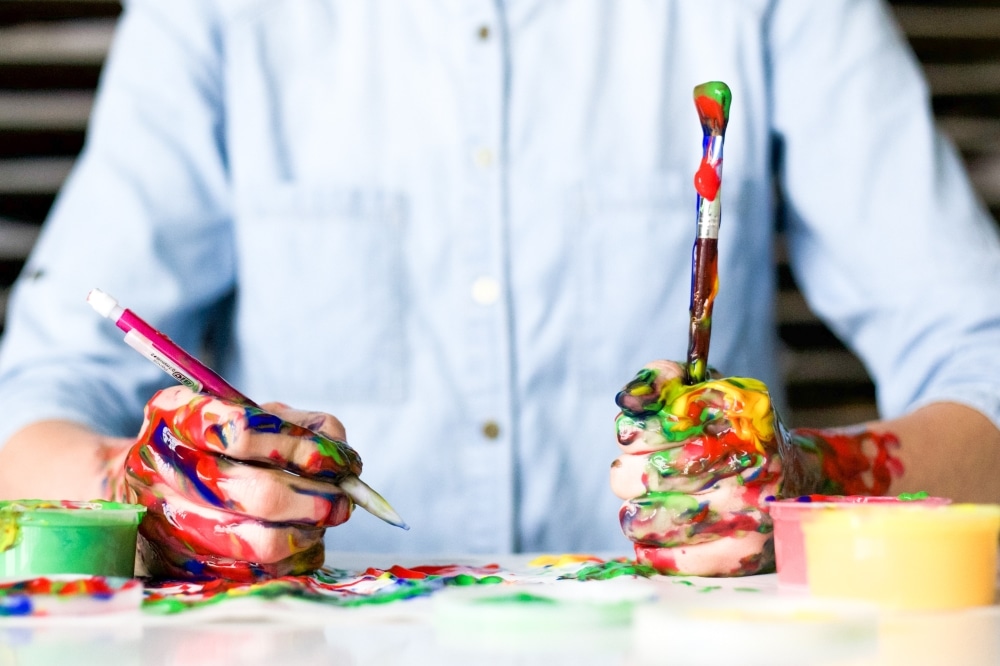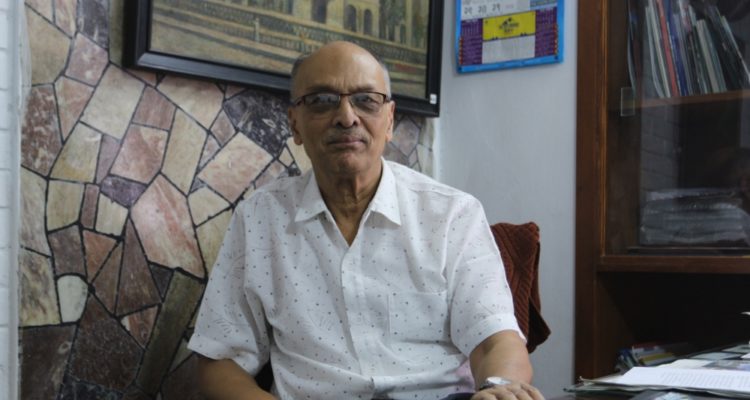Veteran artist Madan Chitrakar has been expressing his creative instincts through painting ever since he remembers – be it on paper or walls. Born to a legendary artist, Tej Bahadur Chitrakar, who introduced Nepal to contemporary art, he feels that art just came naturally to him because of the family legacy. Growing up in an environment surrounded by art and artists influenced Chitrakar to pursue art as a subject and express using creative freedom. At present, Chitrakar teaches Graphics Communications at the Sirjana College of Fine Arts. He is also the principal of the College. He has also published a few books related to art and artists. Here, the veteran artist talks about the Nepali art scenario, the quality of our artworks and his perspective of the art-world.
What is art for you?
For me, art is basically about creative freedom; an opportunity to express myself and one’s creative instinct visually. Art is subjective. So, the definition of art has changed over a period of time. Different people will define art differently. Previously, art was used more to express religious instincts, more than creative ones. It was used as a tool to portray gods. But, today, we can say that art is expressing our feelings and our instincts through various forms. It can be done through painting, sculpture, or even graphic communications.
Do we have any parameters to define the quality of art?
I would say ‘additive beauty’ (or appeal). Suppose, you have zero ideas about art or painting. You visit a painting exhibition or see a painting anywhere, and if the painting appeals to you, you will like the painting, no matter what. But, you will have no idea why you like the painting, but you will anyways. The quality of any art or qualitative painting converses with the audience. They are hypnotizing. And, another indicator, primary indicator, is obviously the feedback from the experts in the field. This not only applies to the art sector, but also other fields.

Photo: Unsplash/ Christian Fregnan
In a stereotypical mindset, only paintings and sculptures used to be considered as an art. Over a period of time, photography, wall paintings, graffiti, and graphic communications are also called art. How do these genres fit the definition of art or creative freedom?
See, art is everywhere. Even when I am talking with you, this is the art of talking. When it comes to visual art, it started since the stone age. Humans, back then, drew on stones. Why? Because it was a way of expressing as their instincts worked that way. Slowly, it became a way to express mythological subjects, gods, among others. Thanka, Pauwa, etc. are some of the examples of the same.
So, it is all about individual taste and your way of expression, how you use that creative freedom, regardless of the category. It is just a choice of style and one’s choice of medium. Photography initially was used as a way to record real-life incidents. Later, the experts thought to use it in a creative form. It is now the art of photography. This also applies to printmaking. Printmaking is an art as well. I teach Graphic Communications. It falls under applied art. We should not confine the term art to a narrow perspective. Let’s keep the meaning broader that way.
You were also associated with Kathmandu University and Nepal Lalitkala Campus earlier. When implementing the studied art practically, how different is it from the theoretical aspects of the syllabus taught in art schools/colleges?
While preparing the syllabus, the expected outcome is to produce at least a raw artist in his/her chosen field of art, by the end of four-six-years of their academic study. As per the system, any art student can pursue a Bachelor’s degree in Arts. But so can students from the management background. Now, the challenge for us is to make the management students make understand everything about art and make them a skilled artist.
The syllabus has changed over the course of time as per relevancy to produce skilled and qualitative artists. We have designed the curriculum in such a way that the students will be a skilled artist and our curriculum is designed in such a way that the artists produced from the art school and colleges in Nepal can at least compete with other South Asian artists.
Speaking in general, there is no huge difference. Our teaching process is systematic and we promote creative freedom. Although, it depends on the student how they grasp all these theoretical knowledge and apply it in a practical world. But, that is the reason we teach. The good thing is that we have really good mentors in each and every sector of art in the country.
As an artist yourself, how do you see the quality of artists, in different genres, we are producing these days?
We are producing competent artists on the basis of their talent and necessary grooming. The freedom of expression has changed a lot as compared to the past. As they say, the sky’s the limit, there are no restrictions as compared to the past. We are calling it creative freedom, which is necessary for art.

Photo: Unsplash/ Alice Achterhof
But these days, there are some ‘want-to-be-artists’, who are not familiar with the etiquette of Nepali art, have misused these creative expressions and have been using this freedom as a shortcut for name, fame, money, and make a profit. They have disgraced art. These cases mostly occur in the case of modern art. Such activities are spreading negative impressions among common people. Pursuing art commercially is not wrong, but one has to follow the etiquette and stop misusing the creative freedom. An artist needs to be honest.
There are many art forms. For example, painting, sculpture, or even nude art for that matter, is really famous in western countries. But, in Nepal, it is considered obscene or a disgrace rather than a means of creative freedom. What, would you say, are the qualities that an artist should follow when it comes to pursuing this form of art?
Art is like a colorful garden. Nude art is also a form of art. It is popular in foreign countries, and even in Nepal, a few artists have been doing nude paintings and there is nothing wrong with choosing this form. Nepali artist Kapil Mani Dixit is pursuing this form of art. Art is all about the search for additive beauty. Talking on a ground level, I wouldn’t encourage it. Having said that, if artists see the beauty in that form, then pursue it. The only concern here is the artist should not have any ulterior motive. There are certain ethical boundaries, which the artists should have in mind.
What are the prospects of Nepali art in the future? How can we develop it in the future?
The future of Nepali art is bright and competitive. If we talk from the effort aspect, the art students must have creative freedom; meaning our curriculum must not have any dregs. Our target must be focused on producing qualitative artists after four-years of their academic study. We should make them capable to look for the best opportunities once they finish their studies. And I would say honesty, motivation, and dedication all together is the foundation for the quality of both art and artist.


Leave a Reply
You must be logged in to post a comment.